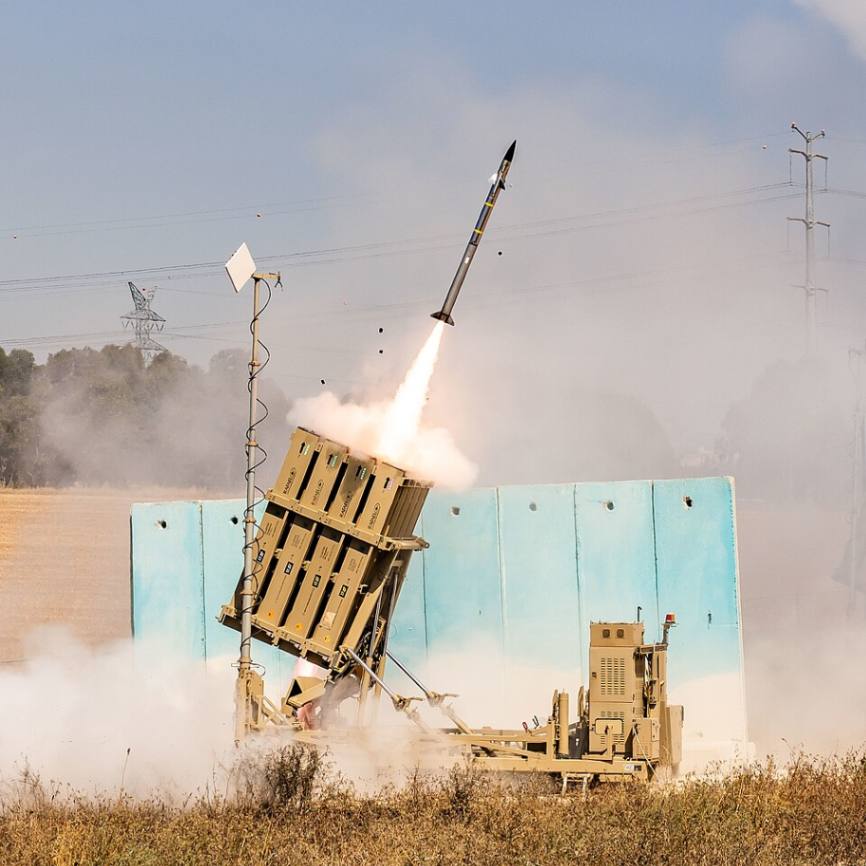When Iran launched a massive missile and drone barrage against Israel in June 2025, observers around the world braced for catastrophic headlines. By mid-June 2025, Iran had launched a total of around 350 ballistic missiles against Israel, with one of the most intense salvos—about 40 missiles—fired in a single night. Many of these were aimed at densely populated areas such as Tel Aviv and Haifa. Yet, remarkably, only 24 Israeli civilians were killed in the initial waves of attack, thanks to Israel’s layered air defenses.
This outcome was not a product of luck. It was a product of architecture—specifically, a highly integrated, layered missile defense system that has evolved through years of investment, combat experience, and alliance coordination. For South Korea, which faces the persistent threat of a missile-armed North Korea just 30 miles north of Seoul, the implications are profound.
Israel’s Layered Defense System
Israel’s missile defense success in June 2025 was not accidental; it was the result of decades of defense planning, operational experience, and close U.S.–Israel cooperation. At the highest altitudes, Israel relies on systems like Arrow-3, which intercepts exo-atmospheric ballistic threats, and Arrow-2, which targets them during terminal descent. These systems were co-developed with the United States. At mid-altitude, Israel deploys David’s Sling, designed to intercept medium- to long-range missiles and cruise missiles.
But it is Iron Dome—Israel’s short-range missile defense system—that may have played the most crucial role in the 2025 conflict. Designed to intercept rockets, artillery shells, and cruise missiles at low altitudes, Iron Dome reportedly intercepted dozens of Iranian IRBMs and cruise missiles during the June strike. Its agility, speed, and cost-efficiency enabled Israel to counter massive salvos without draining its high-end inventory.
Crucially, these systems do not operate independently. Israel’s defense architecture is unified by an integrated command-and-control network that synchronizes sensors, interceptors, and engagement decisions in real time. This interoperability reduces redundancy and increases the speed and efficiency of threat neutralization. In effect, every layer is stitched together into a cohesive, national air and missile defense strategy.
South Korea’s Fragmented Missile Architecture
South Korea, by contrast, faces a far more fragmented defensive structure. Its strategic threat environment is arguably more acute—North Korea fields a dense, evolving arsenal of ballistic missiles, maneuvering reentry vehicles (MaRVs), cruise missiles, and increasingly, AI-guided loitering drones. Many of these are aimed at Seoul, a city of nearly 10 million people within artillery range of the North Korean border.
Yet South Korea’s missile defense architecture is hindered by a division of responsibilities. The Republic of Korea Air Force manages systems targeting missiles flying above 5 km, while the Army is responsible for threats flying below that threshold. This seemingly arbitrary divide has led to bureaucratic stovepipes and coordination gaps, especially during time-critical engagements where shared situational awareness is vital.
South Korea’s current architecture may appear capable on paper—but as Israel’s experience shows, success in real-world missile combat depends not just on interceptors, but on integration, response time, and cost-effective volume fire. In this respect, South Korea’s layered defense is still a work in progress.
The Upper Tier: Progress Underway
To its credit, South Korea has made significant advances in developing its upper and mid-tier missile defense capabilities. The L-SAM I system—considered South Korea’s counterpart to THAAD—is already being deployed and provides high-altitude interception against ballistic threats.
Looking forward, L-SAM II, projected to enter service by 2029, will feature enhanced range and tracking. Meanwhile, PAC-3 MSE and M-SAM II are currently entering operational service, strengthening the mid-tier layer with advanced radar and dual-mode guidance. M-SAM III, scheduled for deployment by 2034, will reinforce coverage in the lower-intermediate altitude band.
At the highest altitudes, South Korea plans to introduce SM-3 Block IB by 2030, which will significantly enhance its exo-atmospheric interception capability—especially useful against North Korea’s growing inventory of longer-range and maneuverable missile types.
However, these interceptors come with steep price tags. A single missile can cost between $3 million and $10 million. In a saturation attack scenario—where dozens or hundreds of missiles are fired simultaneously—such high-end systems may be overwhelmed or depleted quickly unless supported by lower-cost, high-volume intercept options.
The Missing Layer: Below 5km, A Vulnerable Gap
Where Israel relies heavily on the Iron Dome to protect against low-altitude threats, South Korea faces a glaring vulnerability below the 5 km threshold. This is the very layer North Korea is most likely to target in a first strike, using cruise missiles, guided rockets, or UAV swarms to evade higher-altitude defenses.
At present, South Korea’s low-altitude missile defense capabilities remain limited. The LAMD (Long-Range Artillery Intercept System) is under development but won’t be fielded for several years. A dedicated cruise missile response system has been proposed, but it has yet to be funded or developed. Similarly, the CIWS-II, a close-in weapon system designed for intercepting low-flying missiles and drones, remains in its early planning stages.
In short, South Korea currently lacks a credible, deployable low-altitude defense network. This makes it vulnerable to precisely the kinds of tactics Iran used against Israel: large salvos of relatively inexpensive missiles and drones meant to overload defenses and create chaos behind the front lines.
The Strategic Value of Low-Cost Interception
The June 2025 war provides a sobering blueprint for modern missile defense. In a real conflict, low-tier systems like Iron Dome are not backups—they are the front line. By handling the bulk of incoming threats at a cost of $50,000 per interceptor, Iron Dome allowed Israel to preserve its higher-end missiles and ensure continuity of defense operations.
This cost-effective volume fire capability is precisely what South Korea lacks. If North Korea were to launch a saturation attack using cruise missiles and UAVs, Seoul would struggle to mount a sustainable defense over multiple days or weeks without an equivalent system.
Choosing Between Iron Dome and IBCS
This leaves South Korea with a strategic crossroads. One option is to import or license-produce the Iron Dome, a proven and scalable system capable of plugging the sub-5 km gap. Given the urgency of the threat, this route could offer the fastest way to fill the hole in Korea’s layered defense structure.
Alternatively, South Korea could pursue a more ambitious approach by adopting the Integrated Battle Command System (IBCS), developed by Northrop Grumman. Proposed for Korean acquisition in January 2025, IBCS offers unified fire control across altitudes and service branches, integrating sensors and interceptors into a single decision-making loop. If implemented effectively, IBCS could link domestic systems like L-SAM and M-SAM with U.S. assets such as THAAD, while also resolving the Air Force–Army division of responsibility that currently weakens South Korea’s defense posture.
Each path has trade-offs. Iron Dome offers immediacy and affordability. IBCS offers structural integration and long-term adaptability. Both paths present clear advantages—and South Korea would benefit from evaluating them in tandem.
Why Civilian Protection Equals Deterrence
In the Cold War, deterrence was defined by missiles and warheads. In today’s conflicts, deterrence increasingly includes resilience: the ability to protect civilians, maintain decision-making authority, and absorb the first blow without collapse.
North Korea understands this. Its military doctrine emphasizes “decapitation” strikes, disruption of rear-area command posts, and psychological warfare through mass terror. Defending civilian populations is no longer just a moral imperative—it is a strategic requirement.
Israel’s June 2025 performance shows that this is achievable. South Korea, one of the world’s most advanced defense industrial powers, has the capacity to replicate—and even improve upon—Israel’s layered missile defense model. But time is not on its side.
[Image credit: IDF Spokesperson’s Unit photographer, via Wikimedia Commons]
The views and opinions expressed in this article are those of the author.

Dr. Ju Hyung Kim currently serves as the president at the Security Management Institute, a defense think tank affiliated with the South Korean National Assembly. He has been involved in numerous defense projects and has provided consultation to several key organizations, including the Republic of Korea Joint Chiefs of Staff, the Defense Acquisition Program Administration, the Ministry of National Defense, the Korea Institute for Defense Analysis, the Agency for Defense Development, and the Korea Research Institute for Defense Technology Planning and Advancement. He holds a doctoral degree in international relations from the National Graduate Institute for Policy Studies (GRIPS) in Japan, a master’s degree in conflict management from the Johns Hopkins University School of Advanced International Studies (SAIS), and a degree in public policy from Seoul National University’s Graduate School of Public Administration (GSPA).

